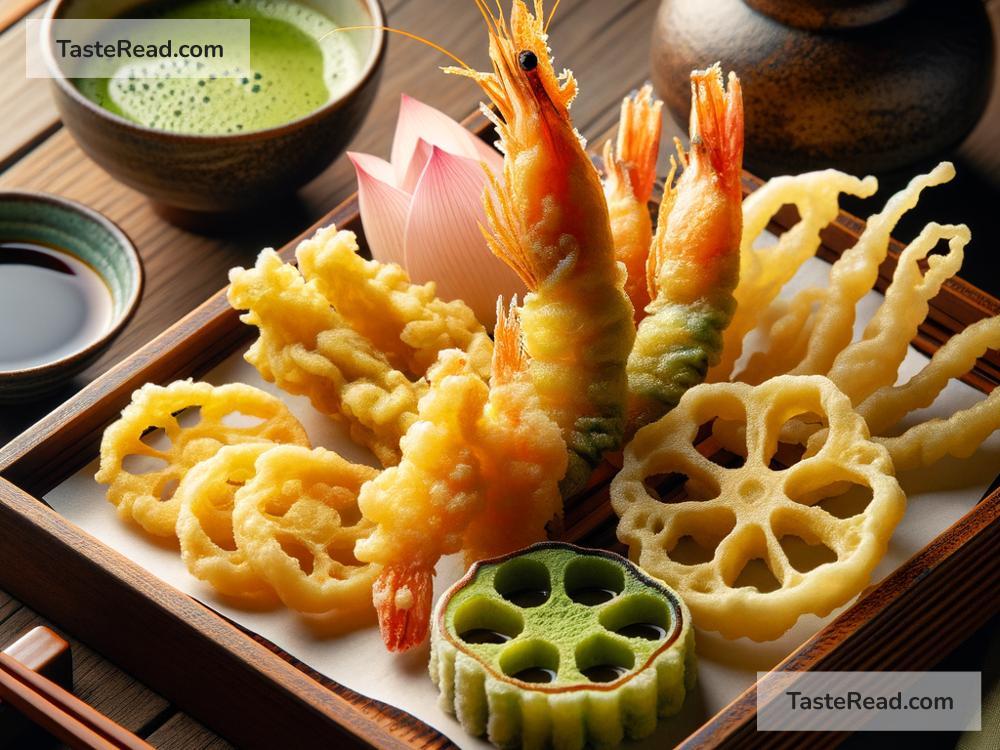How to Prepare Japanese Tempura in Simple English
Tempura is one of the most popular Japanese dishes loved by people all over the world. It’s light, crispy, and delicious — a perfect way to enjoy seafood and vegetables. Tempura is made by dipping ingredients in batter and deep-frying them until golden and crunchy. The process is simple, and you can make this dish at home with easy-to-find ingredients. In this blog, I’ll show you how to prepare Japanese tempura step by step in simple English.
What is Tempura?
Tempura is a Japanese cooking style that involves deep-frying seafood and vegetables. Unlike Western-style fried food, tempura is made with a special batter that creates a thin, light, and crispy coating. The key to a good tempura lies in the batter and frying technique, and I’ll share tips to help you succeed.
Ingredients for Tempura
Here’s what you’ll need to prepare tempura:
For the Batter:
- 1 cup of all-purpose flour
- 1 egg
- 1 cup of cold water (Use ice-cold water for the best results.)
For the Tempura:
- Seafood: Shrimp, fish, or squid can be used.
- Vegetables: Popular choices include sweet potato, zucchini, eggplant, carrots, mushrooms, or green beans.
- Oil for frying: Use vegetable oil, canola oil, or peanut oil. Avoid strong-flavored oils like olive oil.
Optional:
- Tempura sauce: You can buy ready-made tempura dipping sauce, or make your own by mixing soy sauce, mirin (sweet rice wine), sugar, and a small amount of dashi broth (Japanese fish stock).
Step 1: Prepare the Ingredients
-
Prepare the seafood: If you’re using shrimp, peel and devein them but leave the tails on for a better presentation. For fish, cut fillets into bite-sized pieces.
-
Prepare the vegetables: Wash and peel vegetables, if needed. Slice them into thin pieces so they cook evenly. For harder vegetables, like sweet potato or carrots, keep the slices thin so they cook quickly.
Step 2: Make the Batter
The batter is the heart of tempura. To make it correctly, follow these steps:
- Crack the egg into a bowl and lightly beat it.
- Add ice-cold water to the beaten egg. Using cold water is essential because it prevents the batter from becoming too heavy and helps create a crispy finish.
- Add flour: Gradually add the flour to the egg and water mixture. Gently mix it with chopsticks or a spoon. Do not overmix! If the batter has lumps, it’s okay — a lightly mixed batter gives better results. Overmixing will make the tempura less crispy.
Step 3: Heat the Oil
Pour vegetable oil into a deep pot or frying pan, filling it about halfway. Heat the oil to 170–180°C (340–360°F). If you don’t have a thermometer, you can test the oil by dropping a small amount of batter into it. If the batter sinks and quickly rises to the surface with bubbles, the oil is ready.
Step 4: Fry the Tempura
Now it’s time to fry your tempura!
- Dip the ingredients into the batter: Take a piece of seafood or vegetable and dip it into the batter, making sure it is completely coated.
- Carefully place it in the oil: Slowly lower the battered ingredient into the hot oil. Fry only a few pieces at a time to avoid overcrowding the pot. Too many pieces will lower the oil temperature and make the tempura soggy instead of crispy.
- Fry until golden brown: Cook each piece for about 2–4 minutes, depending on the size. Shrimp cooks quickly, while dense vegetables like sweet potato take longer.
- Remove and drain: Use tongs or a slotted spoon to remove the fried tempura from the oil. Place it on a plate lined with paper towels to drain excess oil.
Step 5: Serve Your Tempura
Tempura is best served immediately while it’s still hot and crispy. Arrange the tempura nicely on a plate, and serve it with a small bowl of dipping sauce on the side. You can also serve tempura with steamed rice for a complete meal.
Tips for Perfect Tempura
- Use cold ingredients: Cold water and chilled seafood/vegetables help make the batter crispier.
- Don’t overmix the batter: Keep it light and airy — the secret to perfect tempura is in the batter.
- Maintain oil temperature: If the oil gets too hot, the batter will burn. If it’s too cool, the tempura will absorb too much oil.
- Serve immediately: Tempura is best enjoyed fresh, as it loses its crispness over time.
Conclusion
Making Japanese tempura at home is easier than you might think. With the right ingredients, simple techniques, and a bit of practice, you can create light and crispy tempura that rivals the kind served in restaurants. Whether you’re cooking for family or guests, tempura is a crowd-pleaser that’s sure to impress. So, gather your ingredients, fire up the stove, and give this classic Japanese dish a try. Happy cooking!


